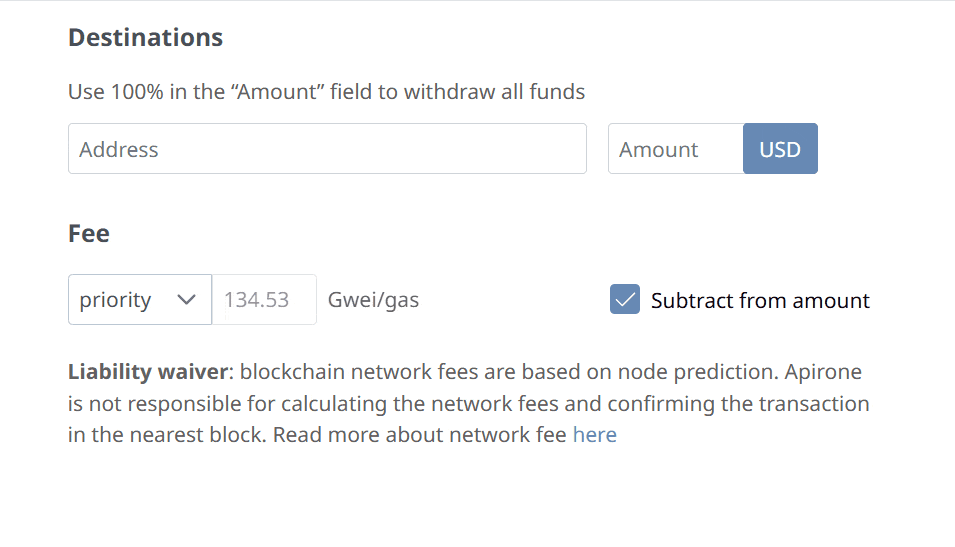Ethereum network fee


Which fee option to select?
In Ethereum, the transaction fee is dynamic: it depends on the network load. It is also important to consider that more complex transactions, such as sending tokens (USDT, USDC), require more resources to complete.
- Normal — standard or market transaction fee. If the network requirements are high, the transaction may be completed with a delay.
- Priority — increased priority, which is often called the "aggressive" method. You increase the fee to increase the probability of fast transaction execution.
The fee is predictively calculated by the node at the moment of formation of the transaction.


How the fee works in Ethereum and what it consists of
Sending Ethereum from one wallet to another requires network computing power, measured in Gas. For example, a standard ETH transfer transaction requires up to 21,000 units of Gas.
The transaction fee is measured in Gwei and consists of two parts:
- Base fee is a fee that is burnt automatically.
- Priority fee is a kind of “tips” for network validators (miners).
Gwei is the denomination unit for Ethereum coins (1 Gwei is equal to 0.000000001 ETH).

Why does the service display one fee value?
For the convenience of users, we have simplified the process of calculating the fee. You just need to choose one of the options “Normal” or “Priority”, focusing on the amount and your own tasks of this transaction. The amount that you see is based on the following formula:
(Base fee + Priority fee) per unit of Gas

Features of transactions in Ethereum
It is important to remember that the maximum base fee is not always burned completely. While the Priority fee is completely transferred to the miners, the remaining part of the Base Fee can be returned to the user if it was not used in full.
But in case of Forwarding (instant redirection of all payments), the address will be completely cleared of Ethereum coins. This will be done by setting a higher Priority fee automatically.

Customizing fee settings
Our API allows you to not only choose between Normal and Priority fees, but also set a custom fee. You can manually specify the Base Fee and Priority Fee in the request.
By the way, if you set a low Base Fee (for example, 1000 Wei) and a market value of Priority Fee (for example, 20 Gwei), then all unused Base Fee will be transferred to validators. In this case, the sender's address can be completely cleared of ETH.

Fee optimization for repeated withdrawals from one address
In some cases, unused fees can be used in the following payments. This is relevant when working with USDT and USDC tokens on the Ethereum network.
When you send USDT using the usdt@eth wallet, we first replenish it with ETH based on the estimated fee. After the transaction is completed, there may be unused funds left on the balance, as mentioned above.
You, as a user, do not notice these processes since they are automatic. We analyze the ETH balance on the wallet and replenish it with a smaller amount during subsequent transactions. This helps to optimize fee costs and reduce the client's costs for transfers to one address.